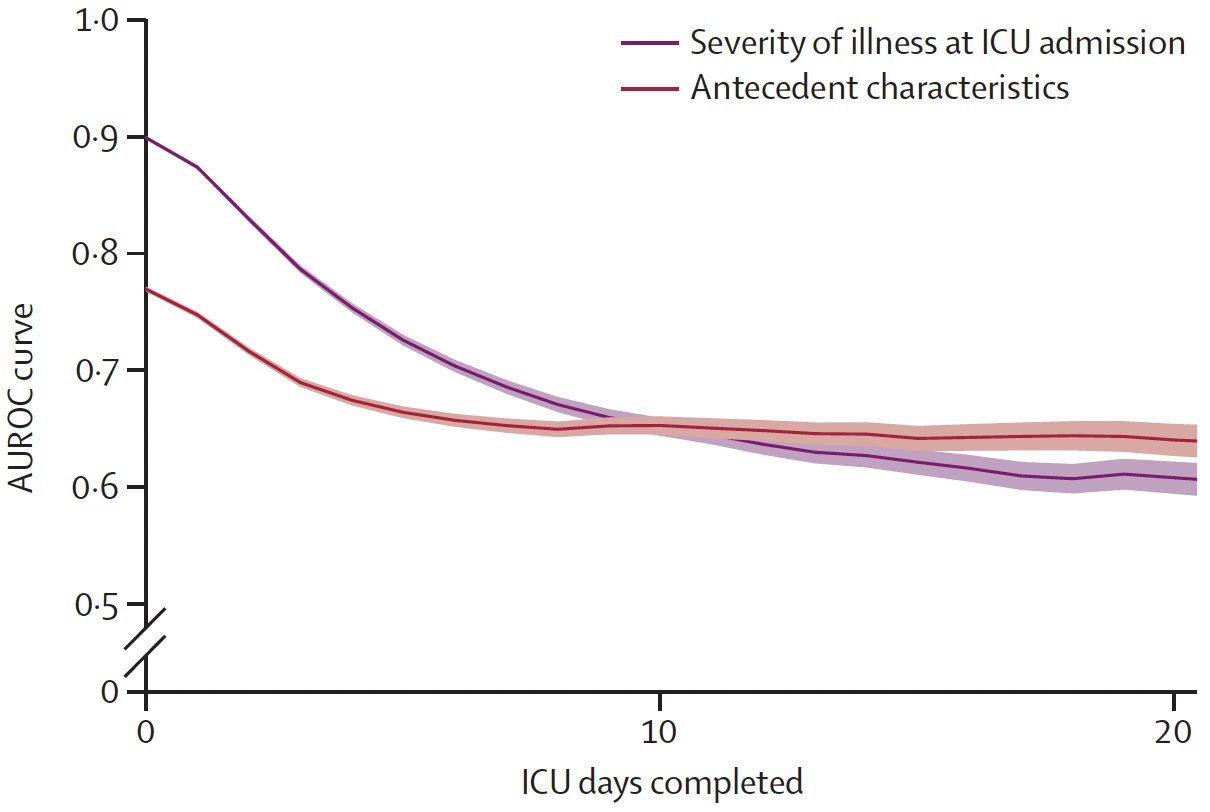Persistent Critical Illness
Persistent critical illness occurs when a patients current reason for ICU is more related to their ongoing critical illness than their original reason for ICU admission. These patients:
- Have a high (~25%) mortality
- Have a lower chance (~46%) of being discharged home
- Consume a large and disproportionate amount of hospital resources
Long-stay ICU patients comprise ~5% of ICU patients but 30% of ICU bed-days. - Are relatively under-researched

After 10 days, antecedent characteristics are more important than acute characteristics for outcome (Iwashyna et al. 2016).
Causes
Syndromes characteristic of the persistently critically ill include:
- B
- Ventilator dependence
- C
- Persistent vasoactive requirement
- D
- Delirium
- Persistent vegetative state
- Critical Illness Neuropathy/Myopathy
- E
- Malnutrition
- Endocrinopathy
- I
- Immunosuppression
- Other
- Wounds
ICU Effects
Issues for the persistently ill in ICU include:
- A
- Trachestomy
- B
- Respiratory wean
- C
- Volume state
Anasarca. - Arrhythmias
- Volume state
- D
- Delirium
- Depression
- Rehabilitation
- E
- Nutrition
- I
- Infections
- H
- Anaemia
Repeated blood sampling.
- Anaemia
- Trauma
- Pressure areas
Post-ICU Effects
Need to recognise these are complex patients with multiple issues and have a high readmission rate - ICU discharge should be a planned affair.
Coordinating Discharge:
- Clinician to clinician handover
- Follow-up by ICU outreach team
Ongoing issues:
- D
- Weakness
- Pain
- PTSD
- Cognitive dysfunction
- H
- DVT
- Trauma
- Pressure areas
References
- Iwashyna, Theodore J, Carol L Hodgson, David Pilcher, Michael Bailey, Allison van Lint, Shaila Chavan, and Rinaldo Bellomo. “Timing of Onset and Burden of Persistent Critical Illness in Australia and New Zealand: A Retrospective, Population-Based, Observational Study.” The Lancet Respiratory Medicine 4, no. 7 (July 2016): 566–73. .
- Iwashyna TJ, Hodgson CL, Pilcher D, Orford N, Santamaria JD, Bailey M, Bellomo R. Towards defining persistent critical illness and other varieties of chronic critical illness. Crit Care Resusc. 2015 Sep;17(3):215-8. PMID: 26282262.